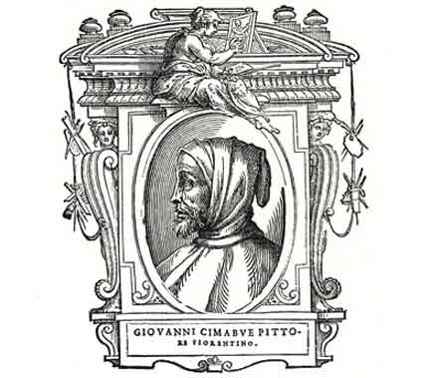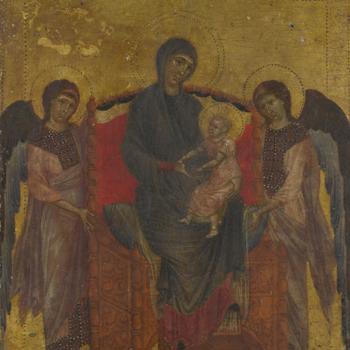Cenni di Pepi, called Cimabue, is first recorded in Rome in 1272 where he is referred to as a 'Florentine painter'. Together with the younger Duccio and Giotto, Cimabue was one of the pioneering artists of the early Italian Renaissance. Cimabue's only documented work is the apse mosaic of 'Saint John the Evangelist' in the Duomo (cathedral) in Pisa of 1301 and 1302. His surviving works include the Santa Trinita 'Maestà' (about 1280, Uffizi, Florence), frescoes in the Lower Church of S. Francesco, Assisi and the now ruined 'Crucifix' in Santa Croce, Florence.
His works represent a crucial moment in the history of art when Italian painters, while still influenced by Byzantine painting, were exploring the naturalistic depiction of forms and three-dimensional space.
Cimabue
documented 1272; died 1302


